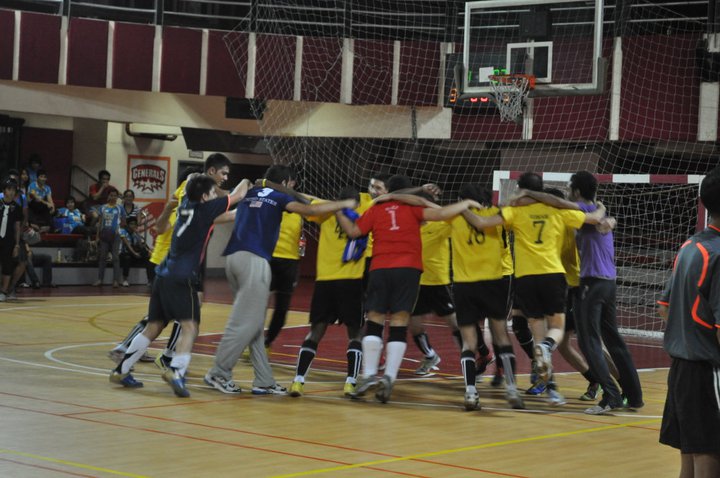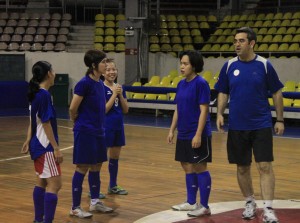MANILA—The Philippine Futsal League is already a testament that futsal is one of the fastest rising sports in the country, but its organizers hope to take the league a step higher.
Founded by Iranian born coach Esmaeil Sedigh of the Philippine national team, the PFL—like any other league trying to establish its name—started from scratch before carving futsal into the local sporting world’s consciousness.
“We really had to start from somewhere before anything else,” said Sedigh, a former first division U21 football player in Iran.
“We’re (Philippines) one of the countries who have leagues for futsal, not all countries have one,” added Sedigh, who first became as an assistant coach in 2005 for the country’s national squad before being tapped as head coach two years after.
Sedigh noticed the potential of Filipinos to excel internationally in this fast-paced sport, which prompted him to conceptualize the PFL. How good can Filipinos be in the sport? The country’s men’s futsal team has risen to No. 88 in the world and Sedigh doesn’t see the climb stopping anytime soon.
“Before, we had problems scouting players. We had to go to provinces and different schools. We just had a hard time,” Sedigh recalled.
The PFL solved that problem. The league flushed players out of hiding and gave them a venue to showcase their skills. Now, nearly the entire women’s national futsal team was discovered in the PFL.
“That’s the main reason why we wanted to have the league,” said Sedigh.
Futsal, a game played in blistering pace, obviously has its similarities with football. It is, basically, a spinoff sport of the Beautiful Game. But its game play actually offers something different.
Futsal is played indoors in a smaller space (close to a size of a basketball court) and it involves lesser players—it’s played five-a-side compared to 11 in football.
Different rules, same excitement level. Futsal, though, has been making waves in the country for just a little over a decade. And thus, it wasn’t easy getting the PFL off the ground.
To begin with, there was the lack of financial aid and sponsorship, and then the unavoidable inadequate knowledge about the sport. To make things worse, futsal was always viewed as football, only indoors.
“We had to refresh and familiarize the players with the set of rules in futsal , as compared to football, which some of the players are not quite familiar to,” said Sedigh.
“But now you can see almost 90 percent [of the players] they know it already,” added the Iranian, who is fondly called coach Esse by his players and peers.
“We also had courses for coaches and referees because to have a league, you need coaches who can teach,” Sedigh continued. “And now 13 of our coaches are now licensed for futsal.”
And slowly but surely, the PFL grew.
“With 16 men’s teams and eight teams in the women’s, the PFL has been improving every year,” said Sedigh.
And now, plans for a bigger and better PFL are in the works with Sedigh looking to have three divisions by next year.
“The top 8 teams will be first division next year and the lower eight will be second division,” said Sedigh. “Then we’ll also have the third division league (for beginners).”
“Absolutely, it will only get bigger,” said an ecstatic Sedigh, who has been based in the Philippines for quite some time now.
Like the Azkals, who brought football back up to its feet, the PFL hopes to at least help futsal maintain its balance.
“Filipinos love the sport, and they are fast learners. You don’t need much players, you don’t need much area—this is very accessible in the Philippines since you can see gyms everywhere,” said Sedigh. “I think we have a big chance to make it big.”
“When we started, futsal was not this popular yet. Now, you can hear about futsal a lot—that’s one of the biggest benefits of having this league,” Sedigh said.



